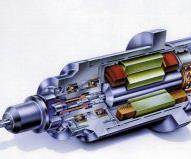Optimize CNC Machining With Add-On Adaptive Controls
The use of CNC adaptive controls can help moldmakers not only reduce cycle times, but also extend the life of their cutting tools.
While CNC technology coupled with CAD/CAM has long helped to introduce flexibility in batch production, there still remain some major inefficiencies inherent in most machining processes.
Present day CNC technology relies on the programmers' input of appropriate cutting parameters - even when sophisticated software systems are used to generate NC programs. The fact is that NC programming is based on predetermined and unchanged conditions.
The control mechanisms of CNC machines are limited to geometry and kinematics. As such, they follow pre-programmed and constant speed and feedrates during each cutting segment. Consequently, they do not have the flexibility required for adapting to the dynamic changes that occur during cutting. This inflexibility would be acceptable if cutting conditions were uniform during machining. In practice, however, cutting conditions tend to continuously vary for many of the following reasons:
- Uneven workpiece surface.
- Gradual tool wear.
- Material hardness varies within each workpiece.
- Workpiece dimensions vary from piece to piece.
- Temperature variations in material during cutting.
- The fixture's stability may be affected during cutting.
- NC programs may contain errors.
Advances in CAD/CAM technology have caused machinists to focus most of their attention to "defining the required geometry" and ignore the need to consider the rest of the previously mentioned conditions. However, with all of the those deviations in mind, NC programmers have no alternative but to be conservative in determining cutting parameters - resulting in safer but more inefficient cutting processes. No matter how optimized NC programs may be, they cannot take into account these dynamic variations encountered during cutting. At best, long NC programs may be created with different feedrates for each segment. However, these programs still cannot modify cutting parameters in real time in order to adapt to unexpected conditions that may occur during cutting.
Dynamic Optimization Solution
CNC machining can be fully optimized through the implementation of add-on adaptive control systems, which continuously monitor cutting conditions in real time. Such optimization and machine automation technology systems are indispensable if expensive CNC machines are ever to run at their full capacity and if cutting tools are to be utilized up to their maximum life rather than incurring in-process catastrophic breakage and production disruption. Similarly, machine operators will not be required to intervene in the machining process to watch and manually fine-tune the process. In this way, true automation is made a reality and programmers may be more aggressive, knowing that the adaptive controls will adjust the feedrate based on the load.
Manufacturers require optimization features that can be added on to their existing CNC machinery. Add-on adaptive control systems connect directly to the CNC machine controller; sense and monitor actual cutting load conditions; and adjust feedrates to optimal levels in real time. This ensures a constant cutting load, which takes into account the variations in the cutting conditions during the cut. In this way, these systems ensure that machine cycle times are minimized and that the machines run at the maximum permissible capacity for each tool.
One of the most attractive features of these systems is that they apply the optimal feedrate in real time based on the most basic parameters for each specific tool and material. These parameters may be input, if necessary, from an external tool library. The operator is not required to know specific load threshold for each tool, as the internal expert system determines these limits for itself.
This enhancement allows NC programmers to be aggressive and program feeds as though the tools are new and sharp. During cutting, the adaptive controls automatically compensate for tool wear since feedrates are automatically and continuously adjusted partly as a function of the extent of tool wear. The system also gives operators a quantitative indication of tool wear during the cut. Based on the system's indication, operators can get ready to replace the worn tools in time without actually incurring costly and disruptive tool breakage or replacing the tool much sooner than necessary.
In addition to detecting tool wear, the devices also protect tools from breakage through their sensitivity to the spindle load. Fewer broken tools also reduce scrap and the need for rework. Breakage protection is provided in the form of an alarm system that alerts the machine operator/supervisor when acute overload conditions occur in the cutting process and, if necessary, automatically stops the machine.
Adaptive control systems ensure automatic optimization of the machining process to reduce cycle times, increase tool utilization and prevent tool breakage, thus lowering machining costs and increasing machine capacity.
These adaptive control systems are applicable on CNC milling, turning and drilling applications. Typical applications include rough milling when the material and workpiece surface hardness vary, die and mold manufacturing, blade manufacturing an
Related Content
Three Good Reasons to Switch from Three- to Five-Axis Machining in Moldmaking
Five-axis machining technology is a great tool in the moldmaker toolbox.
Read MoreHow to Eliminate Chatter
Here are techniques commonly used to combat chatter and guidelines to establish a foundation for optimizing the moldmaking process.
Read MoreMoldmakers Deserve a Total Production Solution
Stability, spindle speed and software are essential consideration for your moldmaking machine tool.
Read MoreDevelopments in High-Speed Machining Technology
There have been many exciting developments in high-speed machining relative to machining centers and controls, tooling and CAD/CAM systems.
Read MoreRead Next
Consider The Control Before You Buy
Your machining center’s control could mean the difference between rapid productivity and costly downtime.
Read MoreReasons to Use Fiber Lasers for Mold Cleaning
Fiber lasers offer a simplicity, speed, control and portability, minimizing mold cleaning risks.
Read MoreHow to Use Strategic Planning Tools, Data to Manage the Human Side of Business
Q&A with Marion Wells, MMT EAB member and founder of Human Asset Management.
Read More





















